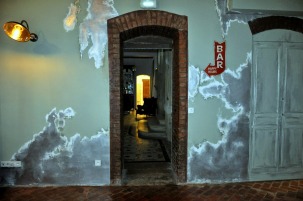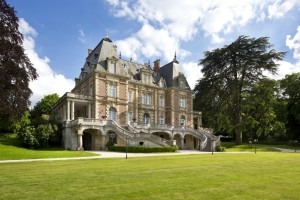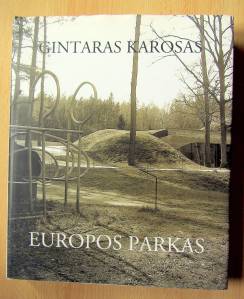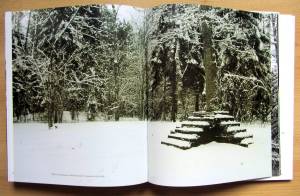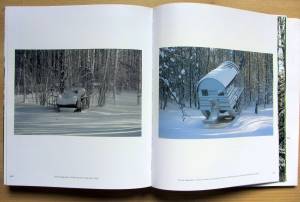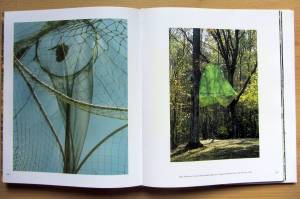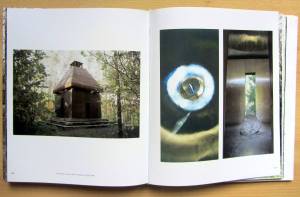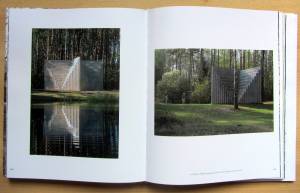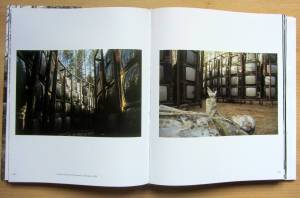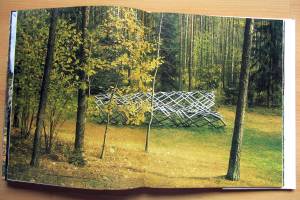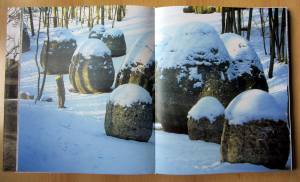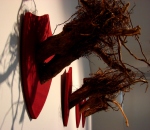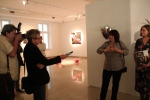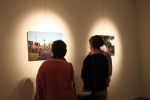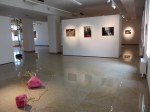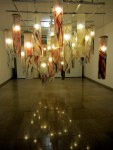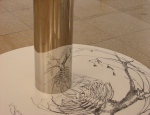The coherence of ideas manifesting itself in the variety of techniques and abundance of forms in the art of Elżbieta Wierzbicka Wela is the most important feature giving them a unique and common countenance. In various ways she touches the issues being he outcome of living in the space of culture, as well as of more and more complex relations between humans and Nature which have been disturbed and distorted by the development of civilisation. She indicates and analyses their different aspects each time applying forms and techniques precisely chosen to make the message clear and strong. With the same ease she uses space forms of installations, both internal and external, monumental drawings, open air sculptures, synthetic abstract paintings, art-objects, art actions and interventions. Almost all her works contain an element of anxiety and concern due to the increasing distance between human and Nature. The issues she focuses on can be generally grouped as connected with our destructive activity, related to increasing alienation from Nature, and those giving hope for our harmonious co-existence with it. An external installation titled The Crown of Thorns with no doubt belongs to the first group – its great expressiveness comes from the form similar to the Christ’s crown of thorns, made from naked, sharp branches painted red, which embraces the group of trees; the installation was made in 2011 in Paris International Golf Club in Baillet-en-France. Similar content related to the sufferings caused by humans to Nature has a cycle of art-objects shown at the Common Earth exhibition (Manggha, Krakow, 2013, together with Shigeko Hirakawa); they remind hunting trophies, how-ever instead of animals’ heads we can see roots of trees and bushes torn from the ground and dramatically twisted. To Leave One’s Mark (the gardens of Drulon Palace, Loye-sur-Amon, 2012), or the wicker Cornucopia with the galore of plastic bottles spilling out of it made in 2013 at the “Wickerwork in Arboretum” open air workshops in Bolestraszyce. The message is emphasized by the contrast between the warmth of organic matter and coldness of plastic. The artists refers to religious symbols and cultural traditions, through the gate of associations wants to reach the sensitivity of the audience, make them reflect in this or that way.
In the next group of her works Wierzbicka indicates the alarming phenomenon of emotional isolation from Nature. On one hand, using modern devices we gather more and more knowledge about the surrounding world, but on the other hand, because of these devices, we loose direct contact with it. More and more often our knowledge is based not on our own experience: protected by monitor screens we isolate ourselves from the matter of the world, and from the emotions this matter brings to us. This issue is shown discreetly in the excellent interactive installation titled “The Whisperers” made in 2011 in the Copernicus Science Centre in Warsaw. She says: This work shows the paradoxical tendency of a contemporary humans to get in touch with Nature through constructed devices. These are as if living sculptures reacting with sounds on the presence of the visitors. The elements of this installation will create the real interactivity. The visitors passing by the work or entering it from different directions provoke the emission of various sounds, and a kind of virtual concert will be composed of these sound, never the same, each time different, one of infinite number of variants (depending on the amount of people, on site they started touring, on time, etc.). The space composition of this work can be seen entirely, as a standardized, modern sculpture, at the same time changing its look as a visitor keeps moving. The installation allows a viewer to enter inside a work of art, to discover the real-virtual aspect of it as a whole and of its parts. “Artificial Life” (deckchairs made of artificial grass places on the rectangles of naked ground), as well as “Echo”, “A Conference”, “The Parabolic Mirror” installations made on the Vistula river bank in Warsaw belong to this group, too.
The third group consists of the most expressive works permeated with emotional references – a living piece of nature is an integral part of all of them. Among them we can find the installations very attractive visually: (“Multiplications”, Musee Ingres, Montauban 2005; Festival des Arts de la Rue Viva Cite, Sotteville-les-Rouen, 2006, France) and “Constellation imaginaire” Futuroscope, France, 2009, (“Five elements”, Shangyuan Art Museum, Beijin, China, 2012). They were composed of glowing “lanterns” made from her own expressive drawings on plastic sheets fixed among the branches of living trees. They reminded extraordinary fruits filled with internal light. In each of these compositions, with profound respect for a living organism, the artist complete it with both artistic matter of drawings and physical matter of the medium. (“The Pedestal for the Tree” Europeos Parkas, Open Air Museum of Contemporary Sculpture, Vilnius, Lituania) and (“Suspended Gravitation” Grójec, Poland, 2007) are also open air compositions closely related to the “light” installations mentioned above.
The art of Elżbieta Wierzbicka Wela has both very attractive visual form and rich, profound content – with no doubt she turns the aesthetic experience into a tool to get the audience’s attention and make people focus on the message brought by her works. This method has also been taken from Nature: flowers use their beauty to attract bees, don’t they ?
Stanisława Zacharko-Łagowska
art historian, curator
Kielce, September 2014
some links :
http://oboksedna.blogspot.fr/2014/09/wela-elzbieta-wierzbicka-instalacja.html
http://www.wrota-swietokrzyskie.pl
http://www.echodnia.eu/
http://www.bwakielce.art.pl/informacje/galeria-na-pietrze
http://swietokrzyskiewloczegi.blogspot.fr/2014/09/kieleckie-instalacje.html
http://www.naszekielce.com/
